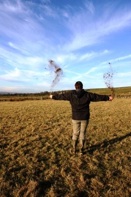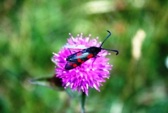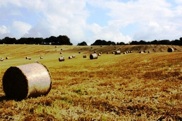farmercology consultancy
creating sustainable solutions for a healthy & green environment
farmercology consultancy
creating sustainable solutions for a healthy & green environment
Habitat creation in both the countryside and in urban environments can help towards restoring a network of functioning habitats & provide benefit to your farm, school or local community.
Flower Power
Plants are the basis of life which attract insects and other animals. Re-introducing wild, native plants is an excellent way to help wildlife recover. We specialise in advising on wildflower meadow creation. Download our leaflet to find out more.



helping enhance farmland, urban green spaces & the school playground
Creating and restoring habitats is one of the main ways in which landscape conservation can begin to reconnect and reverse wildlife losses. Conservation organisations and many landowners through the Environmental Stewardship Schemes, are carrying out more and more habitat creation projects on their land across the country in order to restore and re-create natural and semi-natural habitats, from ponds to wetlands and heathlands, to species-rich grassland. Many urban areas also carry out habitat creation for a variety of reasons -this may be to create wildlife areas in the school grounds; to enhance a roundabout by introducing wildflower seed or to re-vegetate a road side verge; to mitigate for habitat loss due to development or for a community project to restore wildlife in a local nature reserve or urban green space.
We can advise you on how to create and restore habitats through the introduction of wildflower seed. We have experience in Green Hay Strewing & using Local Provenance Seed.
We have experience in advising and managing wildflower creation projects and can help you locate the best places to carry out habitat creation on your land. We specialise in wildflower meadow creation and restoration through the introduction of wildflower seeds and can help you locate a suitable seed source match for your site (either from a commercial supplier or locally harvested seed from existing species-rich habitats). We have links with contractors that will be able to carry out the necessary ground works and we can advise you on what you will need to do to ensure your project is successful. Using our expertise in botanical surveying we can also provide long term monitoring for your site to provide you with an assurance that the wildflower seed you have introduced is doing well and what to do if it’s not!
Habitat Creation



Created by Farmercology consultancy 2011 ©.





